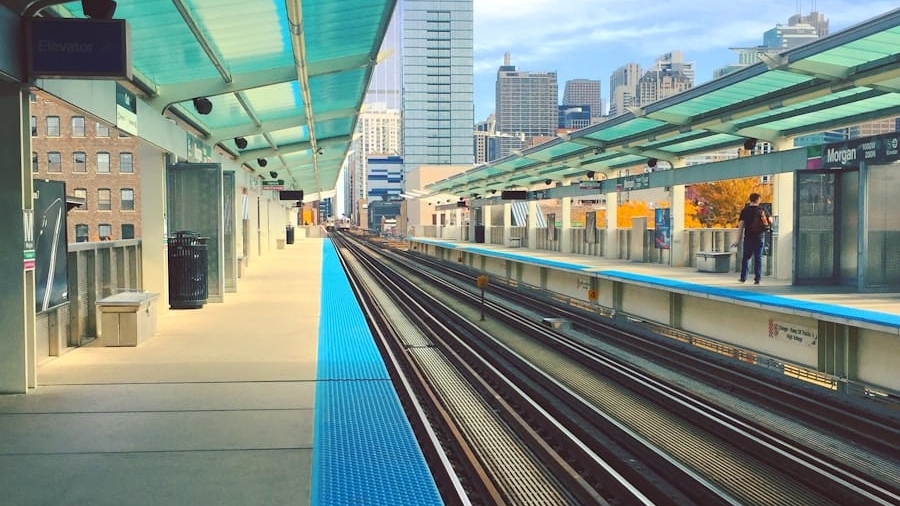The advent of 5G technology marks a significant leap forward in telecommunications, promising to revolutionize how we connect and communicate. Unlike its predecessors, 5G offers unprecedented speed, reduced latency, and the ability to connect a vast number of devices simultaneously. This next-generation wireless technology operates on higher frequency bands, enabling data transfer rates that can reach up to 10 gigabits per second, which is up to 100 times faster than 4G.
The implications of such advancements extend far beyond mere convenience; they pave the way for innovations across various sectors, including healthcare, entertainment, and notably, public transportation. As cities around the globe grapple with increasing populations and the corresponding demand for efficient transit systems, the integration of 5G technology into public transit networks presents a transformative opportunity. With its ability to facilitate real-time data exchange and enhance connectivity, 5G can address many of the longstanding challenges faced by public transit systems.
This article delves into the current challenges of real-time public transit updates, explores how 5G technology can mitigate these issues, and examines the broader implications for passenger experience and operational efficiency.
Key Takeaways
- 5G technology is the next generation of mobile internet connectivity, offering faster speeds and more reliable connections.
- Current challenges in real-time public transit updates include limited bandwidth and latency issues, leading to delays and inaccuracies in information.
- 5G technology addresses these challenges by providing higher bandwidth, lower latency, and increased network capacity for real-time data transmission.
- Benefits of real-time public transit updates enabled by 5G include more accurate and timely information for passengers, leading to improved travel experiences.
- 5G-powered updates enhance passenger experience by enabling features such as real-time tracking, predictive arrival times, and seamless connectivity for on-the-go tasks.
Real-Time Public Transit Updates: The Current Challenges
Outdated Infrastructure and Delays in Information Sharing
Despite advancements in technology, public transit systems still struggle to provide accurate and timely updates to passengers. Many transit agencies utilize legacy systems that are not integrated with modern communication technologies, leading to delays in information sharing. This results in passengers waiting at bus stops or train stations without any clear indication of when their vehicle will arrive, leading to frustration and a diminished overall experience.
Overwhelming Data and Ineffective Analysis
The sheer volume of data generated by transit operations can overwhelm existing systems. Factors such as traffic conditions, weather changes, and mechanical issues can all impact service delivery.
As a result, passengers may receive updates that are either inaccurate or outdated, further eroding trust in public transportation.
The Need for Seamless Communication Across Modes of Transport
The challenge is compounded by the need for seamless communication across various modes of transport—buses, trains, trams—each of which may operate on different schedules and systems. This complexity highlights the need for a more integrated and effective approach to public transit systems.
How 5G Technology Addresses the Challenges
5G technology offers a robust solution to the challenges faced by public transit systems in delivering real-time updates. One of its most significant advantages is its low latency, which allows for near-instantaneous communication between devices. This means that transit agencies can receive and process data from vehicles and infrastructure in real time, enabling them to provide accurate updates to passengers almost immediately.
For example, if a bus is delayed due to traffic congestion, the system can quickly relay this information to waiting passengers via mobile apps or digital displays at stations. Additionally, 5G’s high bandwidth capacity allows for the integration of advanced technologies such as Internet of Things (IoT) devices. These devices can be installed on vehicles and infrastructure to monitor various parameters—such as location, speed, and passenger load—in real time.
By harnessing this data, transit agencies can optimize routes and schedules dynamically based on current conditions. This level of responsiveness not only improves service reliability but also enhances overall operational efficiency.
Benefits of Real-Time Public Transit Updates Enabled by 5G
The implementation of 5G technology in public transit systems brings forth numerous benefits that extend beyond mere convenience for passengers. One of the most notable advantages is improved accuracy in arrival predictions. With real-time data collection and analysis capabilities, transit agencies can provide passengers with precise information about when their vehicle will arrive.
This accuracy fosters greater trust in public transportation systems and encourages more people to utilize these services instead of relying on personal vehicles. Furthermore, enhanced communication capabilities enable transit agencies to implement proactive measures in response to disruptions. For instance, if a train experiences a mechanical failure, the system can quickly inform passengers about alternative routes or modes of transport available to them.
This proactive approach not only minimizes inconvenience but also enhances safety by ensuring that passengers are well-informed during unexpected situations. The ability to communicate effectively during emergencies or service interruptions is crucial for maintaining passenger confidence in public transit systems.
Enhancing Passenger Experience with 5G-Powered Updates
The passenger experience is at the heart of any successful public transit system, and 5G technology has the potential to significantly enhance this experience. With real-time updates delivered directly to smartphones or through digital displays at stations, passengers can make informed decisions about their travel plans. For example, if a bus is running late or if there are delays on a train line, passengers can adjust their schedules accordingly rather than waiting in uncertainty.
Moreover, 5G enables the development of mobile applications that provide personalized travel information based on user preferences and historical data. These applications can offer route suggestions that take into account not only current traffic conditions but also individual passenger habits and preferences. For instance, a commuter who regularly travels during peak hours might receive notifications about less crowded routes or alternative modes of transport that could save time and enhance comfort.
This level of personalization transforms public transit from a one-size-fits-all approach into a tailored experience that meets the unique needs of each passenger.
Improving Transit Operations and Efficiency with 5G
Data-Driven Decision Making
The ability to collect and analyze data in real time allows transit agencies to identify patterns and trends that were previously difficult to discern. For instance, agencies can analyze ridership data to determine peak travel times and adjust service frequency accordingly.
Efficient Resource Allocation
This data-driven approach ensures that resources are allocated efficiently, reducing operational costs while simultaneously improving service quality. Additionally, predictive maintenance becomes more feasible with 5G technology.
Proactive Maintenance and Reliability
By equipping vehicles with sensors that monitor their condition in real time, transit agencies can anticipate mechanical issues before they lead to breakdowns or service interruptions. This proactive maintenance strategy not only extends the lifespan of vehicles but also minimizes downtime, ensuring that services remain reliable for passengers. The integration of 5G into transit operations thus creates a more resilient system capable of adapting to changing demands and conditions.
Future Potential of 5G in Public Transit
The future potential of 5G technology in public transit is vast and multifaceted. As cities continue to evolve and embrace smart technologies, the role of 5G will become increasingly central to creating integrated transportation networks. One exciting prospect is the development of autonomous vehicles that rely on 5G connectivity for communication with other vehicles and infrastructure.
This could lead to safer and more efficient transit systems where vehicles can coordinate their movements in real time to reduce congestion and improve travel times. Moreover, as urban areas become more densely populated, the need for multimodal transportation solutions will grow. 5G technology can facilitate seamless integration between various modes of transport—such as buses, trains, bicycles, and ride-sharing services—allowing passengers to plan their journeys more effectively.
Imagine a scenario where a passenger receives real-time updates about available bike-sharing options at their train station or can easily switch from a bus to a tram without missing a connection due to accurate scheduling information provided through their mobile device.
The Impact of 5G on Real-Time Public Transit Updates
The impact of 5G technology on real-time public transit updates is profound and far-reaching. By addressing existing challenges related to communication infrastructure and data management, 5G enables transit agencies to provide accurate and timely information to passengers while enhancing operational efficiency. The benefits extend beyond improved accuracy; they encompass a holistic transformation of the passenger experience through personalized services and proactive communication strategies.
As we look toward the future, it is clear that 5G will play an integral role in shaping the next generation of public transportation systems. With its ability to support advanced technologies such as IoT devices and autonomous vehicles, 5G has the potential to create smarter, more connected urban environments where public transit is not only reliable but also an attractive option for commuters. The journey toward fully realizing this potential is just beginning, but the promise of 5G technology heralds a new era for public transit that prioritizes efficiency, safety, and passenger satisfaction.
In addition to the advancements in public transit enabled by 5G technology, another interesting article on enicomp.com discusses the best laptops for gaming in 2023. With the increasing popularity of online gaming and eSports, having a high-performance laptop is essential for gamers to enjoy a seamless and immersive gaming experience.




